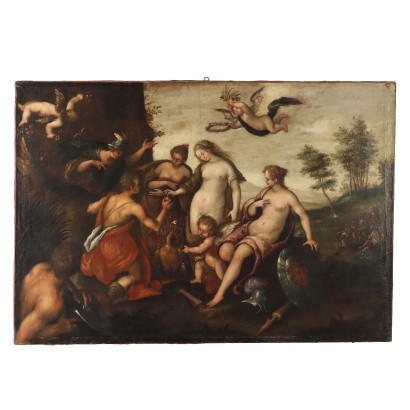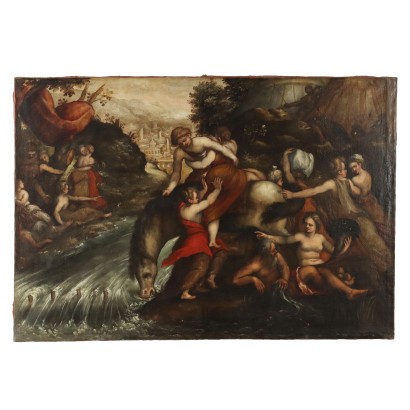Artist
- Michele Vedani [1]
- Quinto Ghermandi [1]
- Ferdinand Barbedienne [2]
- Angelo Dall'Oca Bianca [1]
- Riccardo Viriglio [2]
- Giuseppe Migneco [1]
- Udo Toniato [1]
- Philipp Peter Roos [1]
- Cioni Carpi [1]
- Francesco Messina [1]
- Ottavio Missoni [1]
- Paolo Baratella [1]
- Danilo Martinis [1]
- Giuseppe viviani [1]
- Piero Maggioni [1]
- Eva Petrič [1]
- Nikas Safronov [1]
- Giovanni Boni [1]
- Ferdinando Andreini [1]
- Giulio Branca [1]
- Tommaso Gismondi [1]
- Domenico Gargiulo [1]
- F. Parisi [1]
- Antonio Francesco Peruzzini [1]
- Domenico Lupini [2]
- Luigi Scrosati [1]
- David Teniers III [1]
- Carlo Antonio Crespi [1]
- Mentore Silvani [1]
- Louis Dorigny [1]
- Maurice Henry [3]
- Vyacheslav Sawich Mikhailov [2]
- Maurice Denis [1]
- Guglielmo Zocchi [1]
- Remo Bianco [1]
- Luca Caccioni [2]
- Ottavio Steffenini [1]
- Gaetano Valbusa [1]
- Francesco Camarda [1]
- Leandro Lega [1]
- Andre-Louis Gilbert [1]
- Felice Carena [1]
- Riccardo Licata [1]
- Ibrahim Kodra [1]
- Emilio Scanavino [1]
- Luigi Mantovani [1]
- Giovanni Sottocornola [1]
- Achille Vertunni [1]
- Antonio Mancini [1]
- Raul Viviani [2]
- Concetto Pozzati [1]
- Giovanni Balansino [5]
- Riccardo Pellegrini [1]
- Mino Maccari [1]
- Berto Ferrari [1]
- Alberto Burri [1]
- Lorenzo Gignous [1]
- Primo Carena [6]
- Alfio Paolo Graziani [1]
- Contardo Barbieri [1]
- Mario Cortiello [1]
- Pietro Annigoni [1]
- Peter Paul Rubens [2]
- Jean Cocteau [1]
- Guido Ferroni [1]
- Vittore Antonio Cargnel [1]
- Mario Tozzi [1]
- Adriano Gajoni [1]
- Mario Sironi [1]
- Camillo Ghigo [1]
- Raffaele Passarin [1]
- Vincenzo Gazzotto [1]
- Thomas Heeremans [1]
- Giacomo Micheroux [1]
- Oreste Zampieri [1]
- Fausto Melotti [3]
- Giovanni Muzzioli [1]
- Manuel Garcia de Bucinos [1]
- Salomon Corrodi [1]
- Gaetano Bellei [1]
- Antonio Vallone [2]
- Cesare Maggi [1]
- Giuseppe Giardiello [1]
- Gino Simonetti [1]
- Giuseppe Gennaro [1]
- Achille Sdruscia [1]
- Achille Guzzardella [1]
- Marco Cornini [1]
- Hercules Sanders [1]
- Guido Lodigiani [1]
- Francesco Mazzucchi [1]
- Gabriella Benedini [1]
- Maurizio Goracci [1]
- Ferdinand Schmutzer [1]
- Fiorenzo Tomea [1]
- James McClintock [1]
- Milvia Maglione [1]
- Henry Clifford Warren [1]
- Giovanna Madoi [1]
- Guillaume Coustou [1]
- Claudio Bravo Camus [1]
- Eva Barrett [1]
- Tanzio da Varallo [1]
- Eugenio Moretti Larese [1]
- Giovanni De Martino [1]
- Giovanni Varlese [1]
- Tiziano Galli [1]
- Charles-François Daubigny [1]
- Alfonso Corradi [1]
- Ezio Pastorio [1]
- Guido Reni [1]
- Giuseppe Mascarini [1]
- Aleardo Villa [1]
- Guido Cinotti [1]
Sort by











